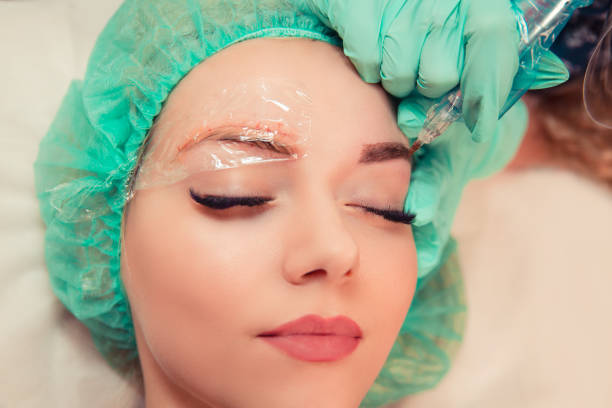Cosmetic tattooing, also known as permanent makeup or micro-pigmentation, has gained popularity in recent years as a technique to enhance facial features or simulate the appearance of makeup. This article aims to provide a comprehensive understanding of cosmetic tattooing, including its definition, benefits, and various techniques used in the process.
Cosmetic tattooing refers to the process of depositing pigment into the dermis layer of the skin using specialized needles or devices. It involves implanting color pigments into specific areas of the face, such as eyebrows, lips, and eyelids, to create long-lasting enhancements. The procedure is typically performed by a trained professional in a sterile environment, ensuring the highest safety standards.

Superstar Attraction Unleash the Captivating Mastery of Cosmetic Tattoo Artistry!
Benefits of Cosmetic Tattooing:
Enhanced Appearance: Cosmetic tattooing allows individuals to achieve natural-looking enhancements that can enhance their facial features. It provides a way to define and shape eyebrows, add color and fullness to lips, and create the appearance of eyeliner or eyeshadow.
Time-Saving:
One of the primary benefits of cosmetic tattooing is the time it saves in daily beauty routines. With permanent makeup, individuals no longer need to spend time applying and reapplying makeup, making it a convenient option for those with busy schedules or limited dexterity.
Confidence Boost:
For individuals with sparse eyebrows, uneven lip color, or other cosmetic concerns, cosmetic tattooing can help boost self-esteem and confidence. The long-lasting results provide a sense of security, knowing that their features always appear polished and defined.

Unleash the Captivating Mastery of Cosmetic Tattoo Artistry in Superstar Attraction!
Cosmetic tattooing offers a range of benefits, from time-saving convenience to enhanced self-confidence. With various techniques available, individuals can choose the option that best suits their needs and desired aesthetic. It is crucial to consult with a qualified professional and discuss expectations, aftercare, and potential risks before undergoing any cosmetic tattooing procedure.



